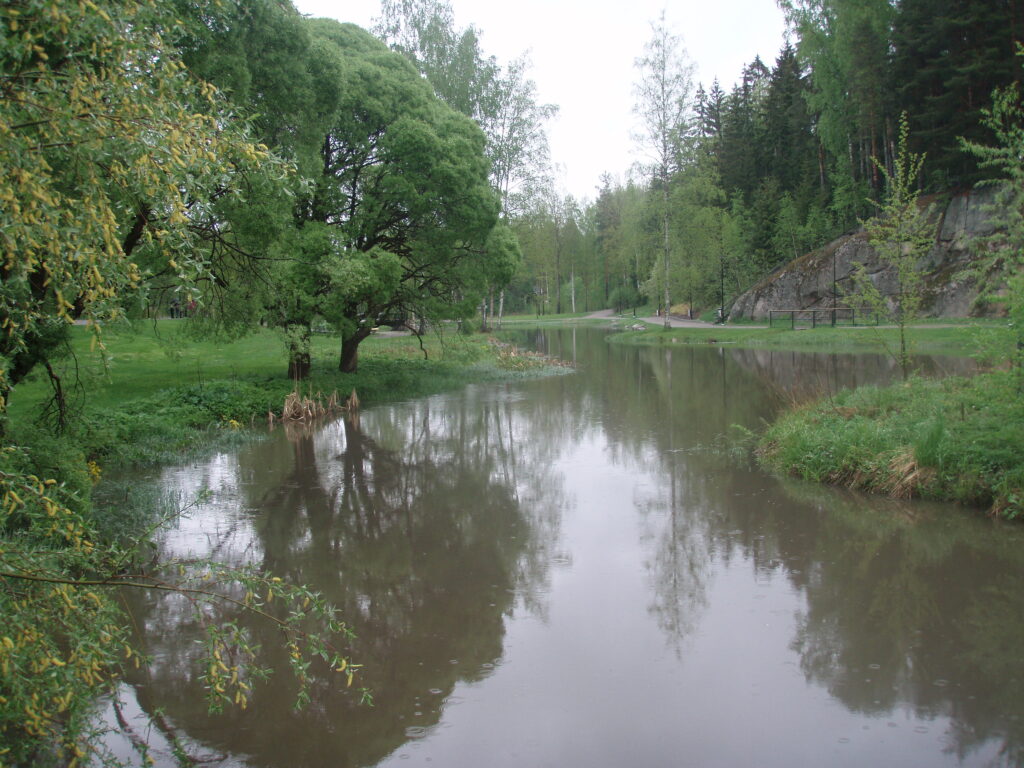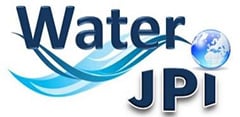What kind of aquatic nature-based solutions we study? Selections of research sites
by Kati Vierikko and Pedro Pinho
Nature-based solutions (NBS, or NbS) are expected to provide multiple ecosystem services (ES) and support biodiversity (BD) (Franzeskaki et al. 2019, European Union 2021). In many European cities, the implementation of NBS in aquatic ecosystems (“aquaNBS”) through the restoration or construction of new habitats has become an important policy goal. While it is assumed that aquaNBS such as wetlands, stormwater ponds, or streams provide multiple ES and enhance local biodiversity, our knowledge of the biodiversity of urban aquaNBS and its linkages with ES provision in cities is limited (Pinho et al. 2021). One of our key research objectives of our project is to understand the links between the biodiversity and the ES in aquaNBS, taking into account the social, ecological and technological factors that influences ecological quality of aquaNBS. We will conduct in-situ empirical research to study biodiversity and ecosystem services in aquaNBS in BiNatUr.
In our project we have partners from five European countries located in different biogeographical regions, are different in their urban structure, population density and socio-political context. It is obvious that identifying and selecting potential research sites, is a challenging task. When our project kicked out, the first key aim was to develop clear and shared rules to select 12 research sites in each partner country.
Two key principles were set up for selecting research sites. Firstly, there are specific societal challenges (e.g. stormwater management, human wellbeing) NBS has been developed for and secondly, sites are selected together with local practitioners.
In each country: Belgium, Finland, Germany, Poland and Portugal – we managed to select 12 research sites that includes four different types of aquaNBS: (I) permanent ponds, (II) temporarily drying ponds, (III) permanent brooks, and (IV) temporarily drying brooks. We chose three replicates of each type per research area, i.e. country (Fig. 1). We excluded large water bodies, brooks less than 50 meters wide, or ponds less than 500 meters max dimension that are natural. Most of our study sites are much smaller water bodies in their width or dimension (Fig. 2 & 3). We also excluded natural water bodies. Each site is either a restored water habitat or newly built aquaNBS such as stormwater wetlands. Their current ecological conditions can be natural-like due to restoration and construction. Vegetation in aquaNBS or margin can be introduced and exotic. Surrounding environment of aquaNBS can be fully artificial and built (worse case in Fig. 1), or partly or totally covered by the vegetation (the best case in Fig. 1).

Figure 1. Sampling design for 12 research sites in each partner country.

Figure 2. The pond Ankkalammet is an example of selected research site for permanent pond in Vantaa, Finland.

Figure 3. The stormwater wetland is an example of selected research site for temporarily drying brook in Helsinki, Finland.
References
Frantzeskaki, F., McPhearson, T. Collier, M.J., Kendal, D., Bulkeley, H., Dumitru, A., Walsh, C., Noble, K., van Wyk, E., Ordóñez, C., Oke, C. & Pintér, L. 2019. Nature-Based Solutions for Urban Climate Change Adaptation: Linking Science, Policy, and Practice Communities for Evidence-Based Decision-Making. BioScience 69(6), 455-466.
European Union 2021. The EU and nature-based solutions. https://ec.europa.eu/info/research-and-innovation/research-area/environment/nature-based-solutions_en
Pinho, P., Casanelles-Abella, J., Luz, A.C., Kubicka, A.M., Branquinho, C., Laanisto, L., Neuenkamp, L., Alós Ortí, M., Obrist, M.K., Deguines, N., Tryjanowski, P., Samson, R., Niinemets, Ü. & Moretti, M. 2021. Research agenda on biodiversity and ecosystem functions and services in European cities. Basic and Applied Ecology 53, 124-133.

Project funders:
This research was funded through the 2020-2021 Biodiversa and Water JPI joint call for research projects, under the BiodivRestore ERA-NET Cofund (GA N°101003777), with the EU and the funding organisations The Research Foundation - Flanders (FWO), Belgium; Academy of Finland (AKA), VDI/VDE-IT, Germany; National Science Center (NCN), Poland and Fundação para a Ciência e Tecnologia (FCT), Portugal

